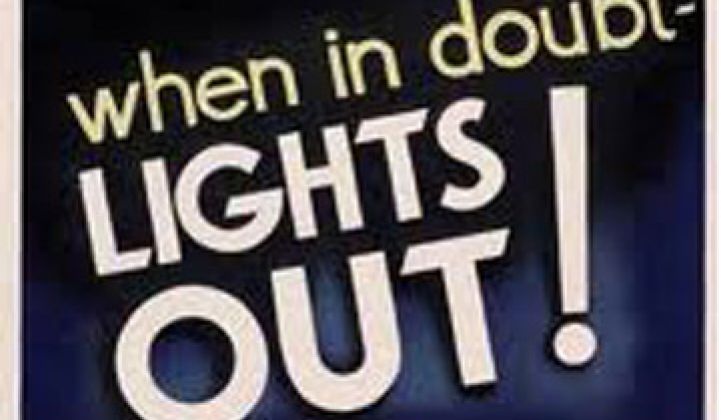Welcome to the semi-dark ages.
To help curb spiraling budgets, some mid-sized cities have begun to experiment with turning off streetlights.
Colorado Springs, for instance, turned off one-third of its streetlights in 2010 to save $1.3 million, according to John Leavitt, a spokesperson for the city. In 2011, the city has turned the lights back on in neighborhoods, but will keep the high-wattage lights lining multi-lane traffic arteries off.
In Indiana, Muncie, Valparaiso, and Merrillville started curbing streetlights in 2009 due to budget woes, a situation which pitted Muncie's mayor against the city council.
Santa Rosa, California, meanwhile, has implemented a program that will run through 2012 under which select lights are turned off and others are equipped with light sensors to cut about $400,000 from the city’s annual budget.
The problem, of course, derives to the limitations of traditional lighting. Most streetlights are powered by high-intensity discharge lamps that aren’t hooked up to networks and can’t be dimmed. The lights are either on (and consuming a few hundred watts) or off. To save money, cities are flicking off a few of them and allowing the overflow from neighboring lights to fill the gap.
“Approximately one-third of a municipality’s electrical costs are for street lighting,” said Joseph DeNicholas, the director of the lighting business unit at National Semiconductor.
Like a number of other companies, National hopes to capitalize on the situation by producing components for LED lights as well as technology that will make it easier to dim traditional type of bulbs. LED lights consume far less power than traditional lights, can be dimmed easily, and get replaced far less often.
National this week, for instance, entered into a memorandum of understanding with Streetlight Intelligence to integrate Streetlight’s SLQ Lumen IQ with the drivers National sells to bulb and lamp makers. (National’s drivers can be found inside of bulbs like the 40-watt-equivalent LED bulb released last year by Lighting Sciences.)
Beyond chips, National is also looking at whether and how it can license firmware and other things from its labs for lighting. It is also looking beyond controlling streetlights to controlling lights in buildings. So expect to see National partnering and competing with outfits like Daintree Networks, Redwood Systems, Digital Lumens and others.
Lighting controls, DeNicholas argues, beats shutting off lights in a wholesale manner. With controls, lights can be dimmed (both outside and inside) to take advantage of sunlight. It also becomes easier to turn off and on select streetlights for periods of time (say, 11 p.m. to 2:30 a.m.) to balance safety concerns with cost-cutting. Some cities such as New York and Anchorage have implemented trials or plans for LED street lighting, but in other places changes are being upheld by municipal inertia.
Interestingly, the outages have worked. In fact, around 100 people have signed a petition in Colorado Springs to keep the lights off in their neighborhood, said Leavitt.
“We didn’t really note any increase in crime rates, etc., due to the lights being off,” he said. “I think folks had just begun to adapt when Council approved the lights for 2011.”



